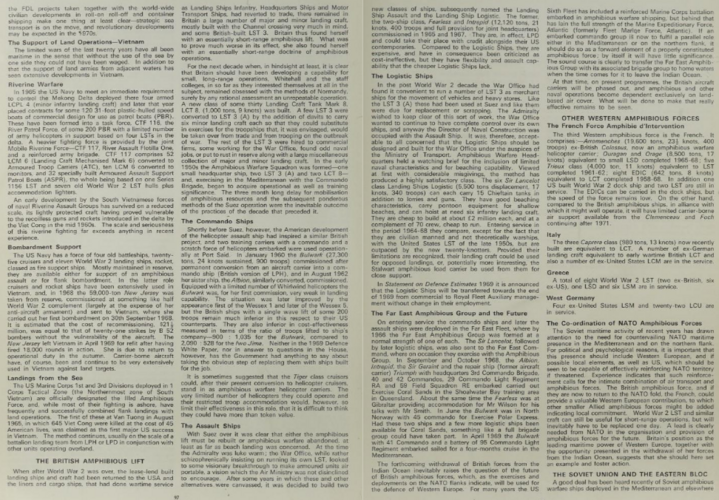- Joined
- 27 September 2006
- Messages
- 6,074
- Reaction score
- 6,188
The RN gets a lot of coverage here but one area has not been looked at so closely.
In the 1960s the RN converted two carriers to Commando Ships able to land Royal Marines by helicopters and small landing craft (Bulwark and Albion). Two Landing Platform Dock (LPD) ships based on US designs were constructed to bring heavy equipment ashore (Fearless and Intrepid).
Finally a class of five LSTs were built to replace wartime designs (Knight class).
Much of this force survived to take part in the 1982 Falklands War and the 1991 Gulf War. Bulwark and Albion gave way to just Hermes and then the three Invincible CVS.
The end of the Cold War forced the LPDs and LSTs to serve on into the 21st Century.
HMS Ocean a cheapish variant of the Invincibles arrived but it took much longer for new LPDs and LSTs to arrive.
HMS Ocean was disposed of to Brasil once the two CVs (Queen Elizabeth and Prince of Wales) entered service.
As had happened with Fearless and Intrepid only one of Albion and Bulwark are in service at a time. The number of Bay class has been reduced.
Meanwhile other countries have built ships combining the helicopter deck with a well to launch landing craft. The US Tarawa class led the way.
So much for history. What plans could the UK have realised instead?
In the 1960s the RN converted two carriers to Commando Ships able to land Royal Marines by helicopters and small landing craft (Bulwark and Albion). Two Landing Platform Dock (LPD) ships based on US designs were constructed to bring heavy equipment ashore (Fearless and Intrepid).
Finally a class of five LSTs were built to replace wartime designs (Knight class).
Much of this force survived to take part in the 1982 Falklands War and the 1991 Gulf War. Bulwark and Albion gave way to just Hermes and then the three Invincible CVS.
The end of the Cold War forced the LPDs and LSTs to serve on into the 21st Century.
HMS Ocean a cheapish variant of the Invincibles arrived but it took much longer for new LPDs and LSTs to arrive.
HMS Ocean was disposed of to Brasil once the two CVs (Queen Elizabeth and Prince of Wales) entered service.
As had happened with Fearless and Intrepid only one of Albion and Bulwark are in service at a time. The number of Bay class has been reduced.
Meanwhile other countries have built ships combining the helicopter deck with a well to launch landing craft. The US Tarawa class led the way.
So much for history. What plans could the UK have realised instead?




